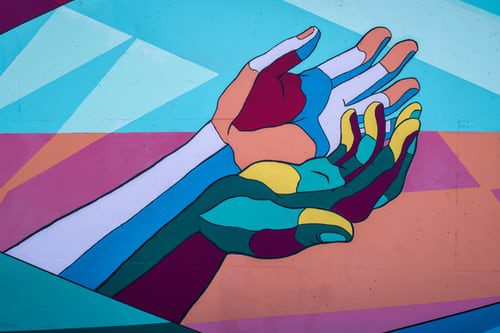In therapy a therapist can make use of various techniques, exercises or experiments as part of the therapeutic process. The aim of such techniques is help support the client to gain further awareness, support the process of healing or reconciliation and achieve their therapeutic goals. In this blog, we will be exploring the technique of family sculpture (also known as a family constellation) and how it can support the client in their growth.
Family constellation is a technique that can be used in therapy (individual, family and even group therapy) as well as in training sessions, educational programmes and in organizations. It’s an exercise where the therapist asks the client to represent their family. It can be done by asking the client to draw themselves and their immediate family on a blank piece of paper, or by using stones or cushions to represent family members in the therapy room. In family therapy, the family members can represent themselves and position themselves around the room in the positions they think best reflects their dynamic. The therapist can further support the exploration by asking the client to take the position of the different members, or even experimenting with changing the positions of the members, changing the distance between the members and addressing different members, traumas or crises directly.
The technique of family sculpture is influenced by psychodrama where the client has the opportunity to externalise their problem to see their issues from a different perspective. The aim of this exercise is to bring awareness about the family, its structure, the quality of the relationships and how the various family members interact with one another.
In therapy it allows for an opportunity to reflect on now the family operates and how it supports or hinders its progress. It can also allow the client to explore any crises and explore what is needed to find solutions to these issues. Often troubles experienced by the family can be influenced by external issues that heavily influence the family, such as war, economic hardships or death. Sometimes problems belonging to previous generations were not resolved and as a result trickle down and influence this generation.
The technique supports the client to think beyond themselves and to see themselves as part of a bigger system and seeing how the different members and contexts can influence one another. Exploring their thoughts, feelings and dilemmas about their family from a different perspective which can in itself support a better understanding and support change. It therefore supports a more solution-focused approach.
Explore this technique for yourself:
Grab a black piece of paper, draw a representation of yourself and map out other members in your family. Take the time to reflect the way you positioned yourself in comparison to the other members of your family. Is somebody missing? Do you have any reflections about the distance (or lack thereof) between the members? How do the different family members influence one another? What would support better quality relationships?
Petra Borgis a Trainee Gestalt Psychotherapist currently reading for a Masters in Gestalt Psychotherapy from the Gestalt Therapy Institute Malta (GPTIM) and working at Willingness as a Trainee Psychotherapist. She has experience as a Triage Officer and has also worked closely with Willingness over several years, coordinating the international internship programme and providing support over diverse events and initiatives.
References:
Ursula Franke. (2017). The river never looks back. Historical and Practical foundations of Bert Hellinger’s family constellations. Germany: Carl-Auer-Systeme Verlag.

